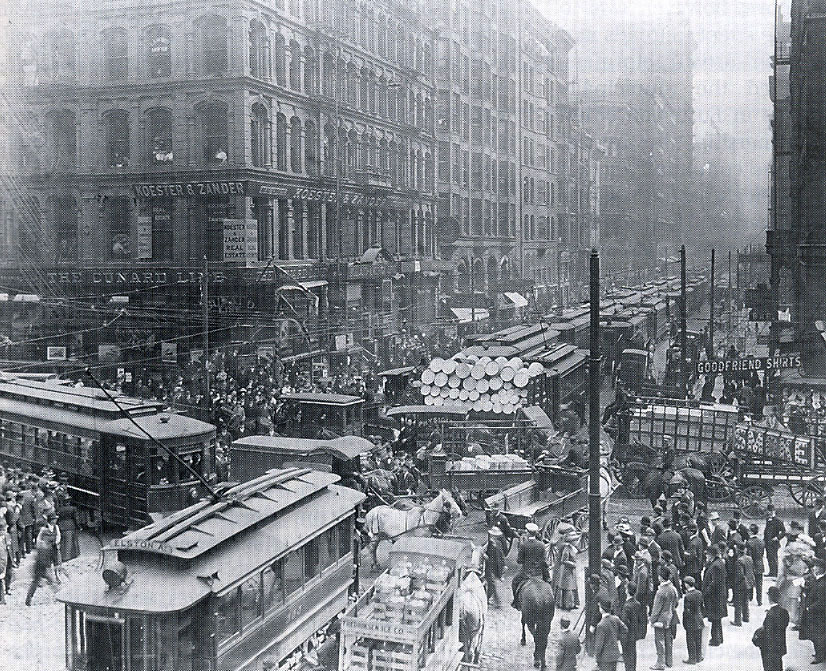The prototypical American city during the Industrial Revolution was very crowded and very dirty. They were hubs of industry. I know that today we think mostly of central business districts like Manhattan, but these cities looked more like the wide, expansive industrial areas that are most epitomized today by parts of Los Angeles (look in Google Maps at Vernon, CA, to see what I mean).
Of course, this does not really answer the question where people lived. Sure, factories provided some housing, but apartments and other high-density dwellings also existed within the city. This close connection in cities between factories and dwellings produced an unsightly and crowded living condition. It should come as no surprise, then, that the rich tended to live outside of the cities to get away from the pollution and the people. Of course, only the rich could afford the commute. The poor, in order to work, had to live in the city.
Then came the trains. Prior to this, the ways of getting around were limited to the horse and buggy and walking. With the trains, people gained great mobility. No longer were people forced to live in extremely high density in the cities. The urban landscape started to gain a more spread out distribution as opposed to the tightly centered model of old.
Suburbia, as we know it, though, could not possibly arise from this situation. Sure, it gave rise to outlying cities, but it was not enough. However, the seed had already been planted. But you still had the problem of transportation to and from the stations. Remember that up to this point all transportation was privately built and maintained. Then came the automobile. With its rise in popularity came the desire for government to control it. Parkways and then highways were built with government money and financed with a gas tax. Finally the modern suburb was born.
Why is government building of these roads such a turning point? Look at what comes along with it. Cars would not need to pay for the pollution that they create. There is no exclusion fee to the road; that is, each car contributes to traffic, yet we do not have to pay for the traffic that we create, hence traffic jams during hours of peak demand.
As for the other aspects, we still have cheap credit and government intrusion into the housing market. Fannie Mae and Freddie Mac are old institutions. But what may be most important of all is zoning laws. The situation we have today consists of a central city that is built to its bureaucratically dictated maximum, hence new development has to occur elsewhere. These other areas also have strict zoning laws, and so development keeps getting pushed further and further out. Yes, prices are expensive, but people are not offerred a choice because of zoning laws. Without zoning laws, do you think it would even be possible for the type of development that we see today? It's wildly expensive to build like this.
So yes, there are a myriad of regulations and programs that contributed to the rise of suburbia. However, they were coming along even before government artificially stimulated their creation. But the scope to which they developed during the 1950s was unprecedented and would not have been possible without a complete distortion of the transportation industry, cheap credit, and zoning laws that essentially dictated its form.



Post WWII vets wanting someplace to go, Eisenhower creating the Federal Highway system, cars going back into production, etc... There is a movie about the first suburb, Levittown, called Wonderland I think... good film.
ReplyDeleteAnd in the process, because of those zoning laws and subsidies, we lost untold acres of great farm land. Imagine what food prices would be with all of that extra produce.
ReplyDeleteEver read Jane Jacobs. The "Life and Death of Great American Cities" is awesome and I believe she, unknowingly perhaps, incorporates many Austrian themes in her writing such as creative destruction, complementary capital, etc. She was not a fan of suburbia.
ReplyDelete